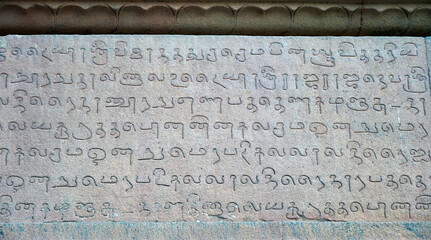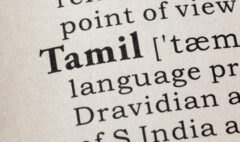Tamil Words for the Environment and Nature
Tamil Words for the Environment and Nature
The Language of the Land: A Guide to Tamil Words for the Environment and Nature
Long before the modern environmental movement, the ancient Tamil people lived in a state of deep and intuitive harmony with the natural world. Their poetry, their philosophy, and their very language were shaped by the rhythms of the land, the sea, and the sky. The classical Sangam literature, with its unique ‘Thinai’ system that links human emotions to specific landscapes, is a testament to this profound connection. For the Tamil language learner, exploring the vocabulary of nature is not just about learning the names of plants and animals; it is about tapping into this ancient, eco-conscious worldview. It is about learning a language that has a rich and precise vocabulary for describing the subtleties of the natural world. This guide is your field companion to the great outdoors. We will explore the essential nature vocabulary in Tamil, from the grand elements to the smallest creatures. We will cover the basic environmental words and the names of common plants and animals in Tamil, giving you the tools you need for talking about nature in a way that is both accurate and appreciative.
The Five Great Elements: The Foundation of the Natural World
In Indian philosophy, the entire material world is believed to be composed of five great elements, the “Pancha Bootham” (பஞ்சபூதம்). Understanding these is the starting point for understanding nature.
- Earth / Land: நிலம் (Nilam) or மண் (Mann) for soil.
- Water: நீர் (Neer) or the more common, everyday word, தண்ணீர் (Thanneer).
- Fire: நெருப்பு (Neruppu).
- Air / Wind: காற்று (Kaatru).
* Sky / Ether: ஆகாயம் (Aagaayam) or வானம் (Vaanam).
The Grand Canvas: Describing Landscapes (நிலப்பரப்பு – Nilapparappu)
Tamil has a rich vocabulary for describing the natural world, a legacy of the Sangam poets who saw the landscape as the stage for human life.
- World: உலகம் (Ulagam)
- Nature: இயற்கை (Iyarkai)
- Mountain: மலை (Malai)
- Hill: குன்று (Kundru)
- Forest: காடு (Kaadu)
- Tree: மரம் (Maram)
- River: ஆறு (Aaru) or நதி (Nadhi)
- Lake: ஏரி (Eri)
- Pond: குளம் (Kulam)
- Sea / Ocean: கடல் (Kadal)
- Beach / Seashore: கடற்கரை (Kadarkarai)
- Desert / Wasteland: பாலைவனம் (Paalaivanam)
- Agricultural Land / Field: வயல் (Vayal)
- Garden: தோட்டம் (Thottam)
The Flora: Vocabulary for Plants and Trees (தாவரங்கள் – Thaavarangal)
The plant kingdom is a vital part of the Tamil landscape and cuisine. Here are the words for its essential components.
- Plant / Seedling: செடி (Sedi)
- Leaf: இலை (Ilai)
- Flower: பூ (Poo) or மலர் (Malar)
- Fruit: பழம் (Pazham)
- Vegetable: காய் (Kaai) (Note: Unripe fruit is also ‘kaai’)
- Root: வேர் (Ver)
- Branch: கிளை (Kilai)
- Seed: விதை (Vidhai)
Common Trees and Flowers:
- Banyan Tree: ஆலமரம் (Aalamaram) – A tree of great cultural and religious significance.
- Coconut Tree: தென்னை மரம் (Thennai maram)
* Coconut: தேங்காய் (Thengaai)
* Mango Tree: மாமரம் (Maamaram)
* Banana Plant: வாழை மரம் (Vaazhai maram)
* Jasmine: மல்லிகை (Malligai) – The iconic, fragrant flower of the region.
* Lotus: தாமரை (Thaamarai) – The national flower of India, with deep spiritual symbolism.
* Rose: ரோஜா (Roja)
The Fauna: Vocabulary for Animals (விலங்குகள் – Vilangugal)
From majestic wild animals to common domestic creatures, here are their Tamil names.
Wild Animals (காட்டு விலங்குகள் – Kaattu Vilangugal):
- Elephant: யானை (Yaanai)
- Tiger: புலி (Puli)
- Lion: சிங்கம் (Singam)
- Monkey: குரங்கு (Kurangu)
- Deer: மான் (Maan)
* Bear: கரடி (Karadi)
* Snake: பாம்பு (Paambu)
* Fox: நரி (Nari)
Domestic Animals (வீட்டு விலங்குகள் – Veettu Vilangugal):
- Dog: நாய் (Naai)
- Cat: பூனை (Poonai)
- Cow: பசு (Pasu) or மாடு (Maadu)
* Goat: ஆடு (Aadu)
* Chicken / Hen: கோழி (Kozhi)
Birds (பறவைகள் – Paravaigal) and Insects (பூச்சிகள் – Poochigal):
- Bird (general): பறவை (Paravai)
- Crow: காகம் (Kaagam) or காக்கா (Kaakkaa)
* Peacock: மயில் (Mayil) – The national bird of India.
* Parrot: கிளி (Kili)
* Fish: மீன் (Meen)
* Butterfly: வண்ணத்துப்பூச்சி (Vannathuppoochi) – Literally “color-insect.”
* Ant: எறும்பு (Erum_bu)
* Mosquito: கொசு (Kosu)
The Language of the Sky and Weather (வானிலை – Vaanilai)
- Sun: சூரியன் (Sooriyan)
- Moon: நிலா (Nila) or சந்திரன் (Sandhiran)
* Star: நட்சத்திரம் (Natchathiram)
* Cloud: மேகம் (Megham)
* Rain: மழை (Mazhai)
* Wind: காற்று (Kaatru)
* Lightning: மின்னல் (Minnal)
* Thunder: இடி (Idi)
* Hot / Heat: சூடு (Soodu) or வெப்பம் (Veppam)
* Cold / Chill: குளிர் (Kulir)
Modern Environmental Words (சுற்றுச்சூழல் வார்த்தைகள் – Sutruchsoozhal Vaarthaigal)
As the world grapples with environmental challenges, a new vocabulary has entered the language.
- Environment: சுற்றுச்சூழல் (Sutruchsoozhal)
- Pollution: மாசுபாடு (Maasupaadu)
* Air Pollution: காற்று மாசுபாடு (Kaatru maasupaadu)
* Water Pollution: நீர் மாசுபாடு (Neer maasupaadu)
* Nature Conservation: இயற்கை பாதுகாப்பு (Iyarkai paadhukaappu)
* Global Warming: புவி வெப்பமயமாதல் (Puvi veppamayamaadhal)
* Plastic: பிளாஸ்டிக் (Pilaastik) or நெகிழி (Negizhi)
* Recycling: மறுசுழற்சி (Marusuzharchi)
Putting it into Practice: Talking About Nature
Here’s how you can use this vocabulary in simple sentences.
- “எனக்கு மலைகளைப் பார்க்கப் பிடிக்கும்.” (Enakku malaigalai-p paarkka-p pidikkum.) – “I like to see mountains.”
- “நேற்று நல்ல மழை பெய்தது.” (Netru nalla mazhai peydhadhu.) – “Yesterday, it rained well.”
- “அந்த மரத்தில் ஒரு அழகான மயில் இருக்கிறது.” (Andha marathil oru azhagaana mayil irukkiradhu.) – “There is a beautiful peacock in that tree.”
- “நாம் நமது சுற்றுச்சூழலைப் பாதுகாக்க வேண்டும்.” (Naam namadhu sutruchsoozhalai-p paadhukaakka vendum.) – “We must protect our environment.”
- “வானம் மேகமூட்டத்துடன் காணப்படுகிறது.” (Vaanam megamoottathudan kaanappadugiradhu.) – “The sky looks cloudy.”
Conclusion: Reconnecting with the Earth Through Language
The Tamil language offers a rich and deeply rooted vocabulary for describing the natural world. Learning these words is about more than just expanding your lexicon; it’s about seeing the world through a new lens, one that has been shaped by centuries of close observation and a deep reverence for the environment. Start by learning the names of the plants and animals you see in your own neighborhood. The next time you go for a walk, try to name the things you see in Tamil: the ‘maram’, the ‘poo’, the ‘naai’. Talk about the weather in Tamil. This practice of naming and describing the natural world around you is a powerful way to make the language a part of your daily, lived experience. In doing so, you will be participating in an ancient Tamil tradition: finding the perfect words to honor the profound and beautiful connection between humanity and nature.










